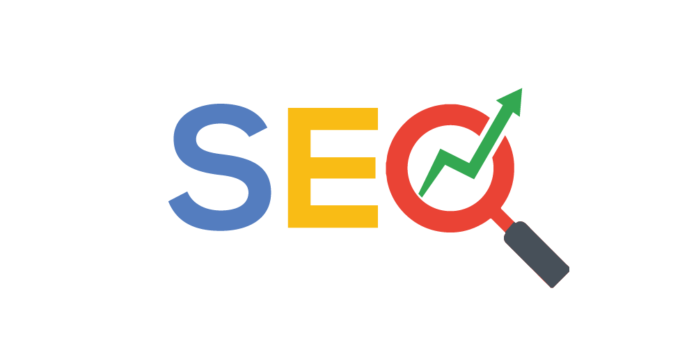In the digital age, having a website is just the beginning. To stand out in an ocean of online content, you need to make sure your site is optimized for search engines. That’s where on-page SEO comes in. If you’re new to this concept or looking for ways to fine-tune your website, you’ve come to the right place. As per a renowned SEO company in Edmonton, On-Page SEO should be the first step before doing the efforts for link building.
Understanding On-Page SEO
On-page SEO refers to the practice of optimizing individual web pages to rank higher in search engines and earn more relevant traffic. Unlike off-page SEO, which involves external signals like backlinks, on-page SEO focuses on elements within your control on your website. This includes both the content and the HTML source code of a page.
Why On-Page SEO Matters?
On-page SEO is crucial because it helps search engines understand your website and its content. By carefully optimizing various elements on your pages, you can make it easier for search engines to index your site and rank it for relevant queries. Ultimately, this can lead to increased visibility, more organic traffic, and better user engagement.
Optimizing Title Tags and Meta Descriptions
Title tags and meta descriptions are critical elements of on-page SEO. They provide search engines and users with a brief overview of what your page is about.
Crafting Effective Title Tags
Your title tag should be concise, descriptive, and include your primary keyword. Aim for a length of 50-60 characters to ensure it displays fully in search results. A compelling title can entice users to click on your link, boosting your click-through rate.
Writing Compelling Meta Descriptions
Meta descriptions should provide a summary of your page’s content and include your primary keyword. While they don’t directly impact rankings, well-crafted Meta descriptions can improve your click-through rate by encouraging users to visit your site. Aim for a length of 150-160 characters.
Using Header Tags Correctly
Header tags (H1, H2, H3, etc.) help organize your content and make it easier for search engines to understand its structure. They also improve readability for users.
The Role of Header Tags
Header tags should be used to indicate the hierarchy of your content. The H1 tag is typically reserved for the page’s main title, while H2 and H3 tags can be used for subheadings.
Best Practices for Header Tags
Use only one H1 tag per page to avoid confusion. Incorporate relevant keywords into your header tags, but avoid keyword stuffing. Make sure each tag accurately reflects the content of its section.
Creating SEO-Friendly URLs
URLs are another important aspect of on-page SEO. They should be clean, descriptive, and include your primary keyword.
The Importance of URL Structure
A well-structured URL helps search engines and users understand what your page is about. It should be concise and easy to read.
Tips for Optimizing URLs
Keep your URLs short and avoid using unnecessary characters or numbers. Use hyphens to separate words and include your primary keyword.
Internal Linking Strategies
Internal linking involves linking to other pages within your website. This not only helps users navigate your site but also improves search engine rankings.
Benefits of Internal Linking
Internal links distribute link equity across your site, helping search engines index your pages more effectively. They also keep users engaged by directing them to related content.
Best Practices for Internal Linking
Use descriptive anchor text that includes relevant keywords. Link to related pages that provide additional value to your readers. Avoid excessive linking, as this can dilute the impact of your links.
Techniques for Speed Optimization
Optimize images by compressing them without compromising quality. Minimize the use of JavaScript and CSS files. Use a content delivery network (CDN) to reduce server response times.
Leveraging Social Sharing
Social sharing can drive traffic to your site and improve your search engine rankings. When users share your content, it signals to search engines that your site is valuable and relevant.
The Power of Social Media
Social media platforms provide a powerful way to reach a wider audience. By encouraging social sharing, you can increase your visibility and attract more visitors to your site.
Encouraging Social Sharing
Include social sharing buttons on your pages to make it easy for users to share your content. Create engaging, shareable content that resonates with your audience. Engage with your followers on social media to build a community around your brand.
Monitoring and Analyzing Performance
To ensure your on-page SEO efforts are effective, it’s important to monitor and analyze your performance. This allows you to identify areas for improvement and adjust your strategy accordingly.
The Importance of Analytics
Analytics tools like Google Analytics and Google Search Console provide valuable insights into your site’s performance. They can help you track metrics like organic traffic, bounce rate, and average session duration.
Using Data to Improve SEO
Regularly review your analytics data to identify trends and areas for improvement. Use this information to refine your content, optimize your keywords, and enhance your overall SEO strategy.
Staying Up-to-Date with SEO Trends
SEO is constantly evolving, and staying up-to-date with the latest trends and best practices is essential for maintaining your rankings.
The Changing SEO Landscape
Search engines frequently update their algorithms, and new trends emerge regularly. Staying informed about these changes can help you stay ahead of the competition.
Resources for Staying Informed
Follow reputable SEO blogs and forums to keep up with the latest developments. Attend industry conferences and webinars to learn from experts. Join SEO communities to share knowledge and insights with other professionals.
The Role of User Experience in SEO
User experience (UX) is a critical factor for SEO. Search engines prioritize sites that provide a positive user experience, rewarding them with higher rankings.
Enhancing User Experience
Focus on creating intuitive navigation, clear calls to action, and engaging content. Ensure your site is visually appealing and easy to use. Regularly test your site’s usability to identify and address any issues.

